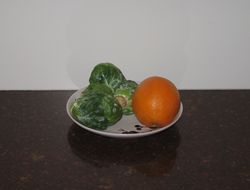Vitamin C
Published: March 25, 2022
Vitamin C is an essential nutrient required for a variety of important metabolic processes within your body.
Humans, and a few other mammals: guinea pigs, fruit bats, primates and some birds, are unable to synthesise vitamin C due to the lack of a particular enzyme: gulonolactone oxidase.
This enzyme is involved in the final metabolic reaction in the formation of vitamin C.
Your body does produce an inactive from of vitamin C, but gulonolactone oxidase is required to convert the inactive form to the active form of vitamin C.
Research into the role of vitamin C (ascorbic acid or ascorbate) began several hundred years ago.
In the 18th century "scurvy", a condtion that was often fatal, was prevalent among long voyage ship's crews. Men on short duration voyages were not affected by scurvy.
In the mid 18th century a concoction containing lemon and limes appeared to cure scurvy.
However, it was not until the 19th century that the lack of dietary fresh fruits and vegetables over several months was identified as the cause of scurvy.
A daily dose of lime juice was then prescribed and provided for every sailor in the British Navy. The factor that limes contained which appeared to prevent scurvy was called the "anti-ascorbuticic factor".
At the beginning of the 20th century a compound similar to that of glucose was isolated and named ascorbic acid which led to the production of vitamin C pills and supplements.
Research in tho the functions of vitamin C and the health benefits of supplementation continues.
Functions of vitamin C
Vitamin C has an uncomplicated structure, but it is involved in many complex metabolic reactions in your body acting as a cofactor to specific enzymes in some reactions and as an antioxidant.
As a cofactor vitamin C maintains the integrity of...link to the full article to learn more.
References
1.
Whitney, E. & Rady Rolfes, S. (2005). Understanding Nutrition. Belmont, CA: Thomson Wadsworth
2.
Gropper, S.S., Smith, J.L. & Groff, J.L. (2005). Advanced Nutrition and Human Metabolism (4thEd.). Belmont, CA: Thomson Wadsworth.

